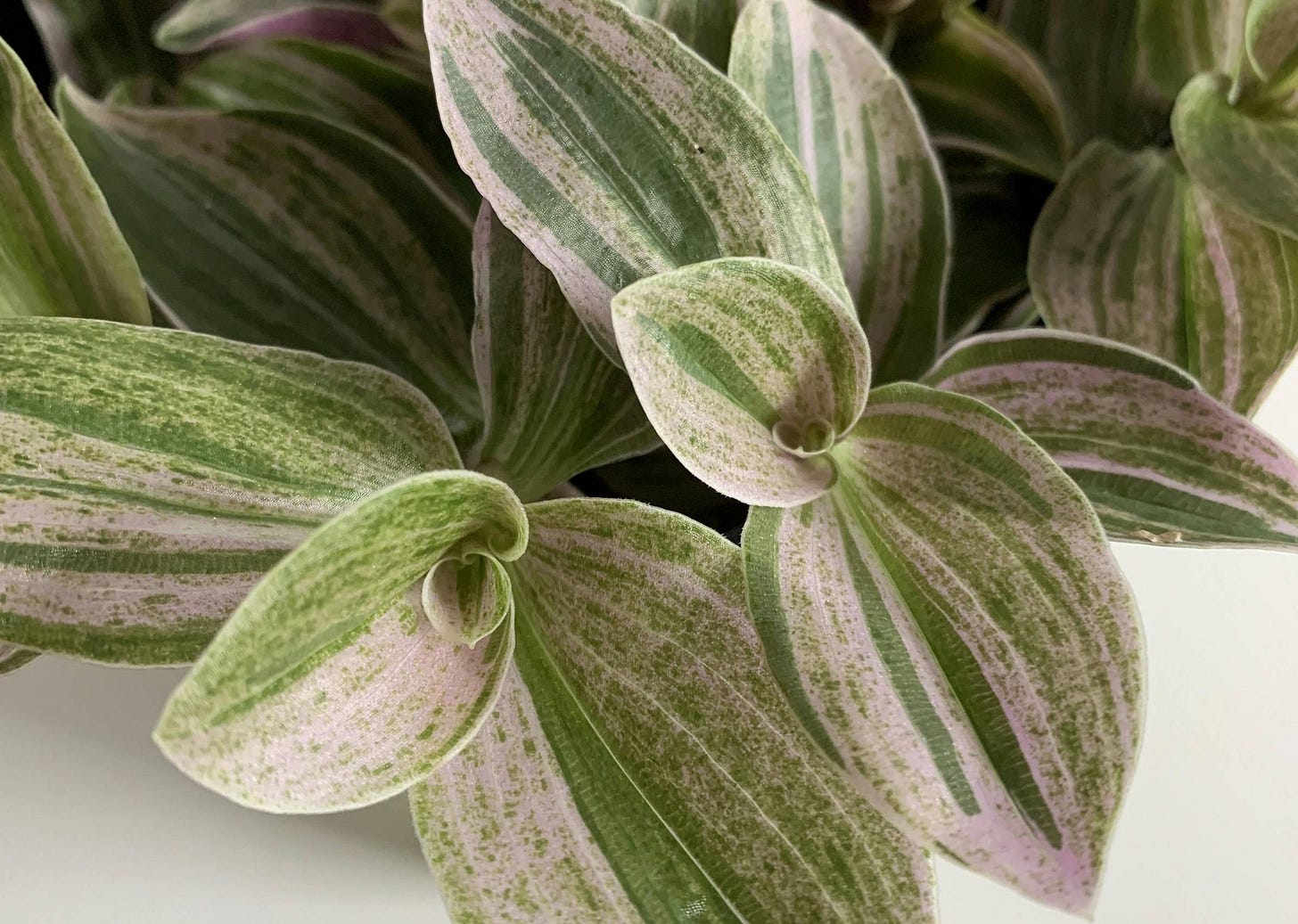Why I Switched to Sphagnum Moss for Half of My Tradescantia Collection
Disclaimer: This post contains affiliate links, which means I earn a small commission if you make a purchase using my links or my code, at no extra cost to you. Your support helps me keep sharing Tradescantia tips and content, thank you!
Today, I want to share something a bit different with you, how I’ve been growing about half of my Tradescantias in sphagnum moss instead of traditional soil.
At first, I didn’t even realize that growing Tradescantias in sphagnum moss long-term was an option. But after using it for some of my propagations and loving the results, I decided to experiment with it more. And let me tell you, the results have been amazing for certain varieties!
Now, before you think, “Tradescantias will grow in anything, so why bother?”—this is true for some varieties, but not all of them.
Let me walk you through why I made this change and how it’s working for me.
Why I Switched to Sphagnum Moss
There are two main reasons why I prefer moss for some of my Tradescantias: it reduces the risk of root rot for small plants with delicate roots, and I can use self-watering pots, which makes watering a lot easier.
Here are some key properties that make moss the perfect growing medium:
Excellent Water Retention: Moss retains moisture well without becoming waterlogged, helping to prevent root rot.
Great Aeration: Even though moss holds moisture, it’s still airy, allowing oxygen to reach the roots, which is essential for healthy growth.
Less Chance of Overwatering: Since it balances moisture so well, I find it easier to avoid overwatering—a common issue with traditional soil mixes.
How I Care for My Moss-Grown Tradescantias
Caring for Tradescantias in sphagnum moss is a bit different from growing them in regular soil, but here’s what I do:
Watering: I keep them in self-watering pots with clear bottoms so I can easily monitor the water levels. I water when the reservoir is empty, making sure the moss never completely dries out.
Fertilizing: Since there are no nutrients in sphagnum moss, I use a liquid fertilizer designed for hydroponics every 2-6 weeks, depending on the time of year and how much the plant is growing.
Repotting: Moss breaks down more slowly than soil, so the plants usually outgrow their pots before the moss needs replacing. However, I still keep an eye on the condition of the moss to make sure it doesn’t compact too much over time.
Should You Try Sphagnum Moss?
If you’re having trouble with your Tradescantias in traditional soil, or just want to try something new, sphagnum moss could be worth experimenting with! It works especially well if you struggle with overwatering or root rot, and many plants seem to love the added aeration and moisture control.
There are a few things to keep in mind, though. The quality of the moss does matter. I’ve recently bought cheaper moss, and I regret it. Good quality moss should be light in colour, have long strands, and contain minimal debris like grass and stems. Low-quality moss decomposes more quickly, which can cause pH imbalances, and it tends to grow mold and algae more easily. While this doesn’t necessarily harm the plant, it looks unpleasant and can attract fungus gnats.
If you’re looking for high-quality sphagnum moss, I highly recommend Sphaxx from SYBotanica! After trying several different kinds, this is the only one I use now.
💜 Use code KATJA10 for 10% off your entire order!
Let me know if you have any questions or want more tips about using moss—I’m happy to help!
If you haven’t already, don’t forget to subscribe so you never miss out on future newsletters.
Thanks for reading, and happy planting!
Katja





